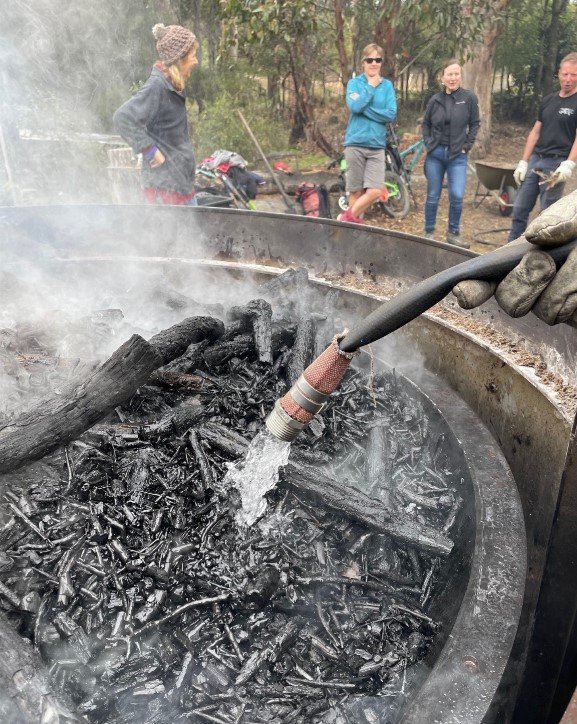
Reduce your bushfire risk with biochar
If you have a large garden, you’ve probably been busy pruning back old woody branches ahead of the summer bushfire season and preparing to send your green waste to the tip.
Or you might have a huge pile of branches building up in the backyard, ready for your next bonfire and creating a significant bushfire risk.
But what if you could turn this green waste into biochar, a product that can be dug back into your garden, promoting better soil health, increasing water retention and returning carbon to the earth?
The burning
In simple terms, biochar is a form of charcoal created by heating organic materials, such as green waste, woodchips or plant matter, in an oxygen-limited environment. The process, known as pyrolysis, prevents complete combustion, resulting in the breakdown of the material into biochar.
It is created using a purpose-built kiln that combusts green waste at high temperatures and then stops the burning process with water, leaving a charcoal like material.
Hobart Councillor Bill Harvey has been using a mobile kiln to promote the environmental benefits of biochar with Landcare and local neighbourhood groups, and has run multiple workshops across Greater Hobart.
Everyone at the workshops pitches in, feeding the kiln with green waste, which can even include environmental weeds like gorse.
The entire process takes around three hours to make about 600 litres of biochar depending on the volume of waste to be processed.
Once the biochar is watered and cooled down within the kiln it is then bagged up for people to take home and use in their own gardens.
Job well done. Tim Tams, tea and coffee all round.
Portability is key
Bill says portable biochar kilns are the perfect solution for small landholders or neighbourhood groups who want to turn their green waste into biochar while reducing fire hazards.
He is offering biochar demonstrations for free to Bushcare, Landcare and community groups, and hopes to eventually establish a portable biochar kiln program, making kilns available to landholders and neighbourhood community groups.
“Turning green waste into biochar is a great way of reducing the build-up of bushfire-prone vegetation on your property, sequestering the carbon as biochar rather than releasing it into the atmosphere as carbon dioxide and creating a very valuable additive for your garden,” Bill says.
The porous nature of biochar allows it to soak up water and retain it in the soil.
Get in touch
If you are a small landholder within Greater Hobart, or part of a Bushcare, Landcare or local neighbourhood group, and would like to trial a biochar kiln, get in touch with Bill Harvey at billharvey@iinet.net.au
Bill is happy to put on local demonstrations with groups of eight people or more.

